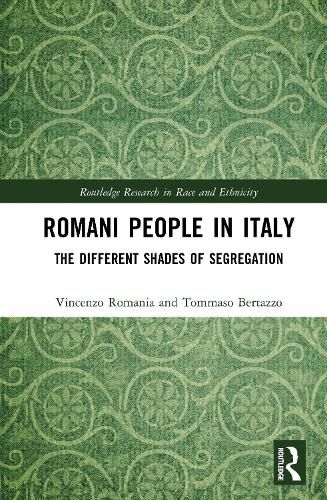Readings Newsletter
Become a Readings Member to make your shopping experience even easier.
Sign in or sign up for free!
You’re not far away from qualifying for FREE standard shipping within Australia
You’ve qualified for FREE standard shipping within Australia
The cart is loading…






Romani People in Italy offers an in-depth, updated, and detailed analysis of the segregated condition of Romani people in Italy. The different shades of segregation take the form of housing, educational and social isolation.
While much of the existing literature focuses on individual case studies, or on historical and documentary analysis, this book combines the two approaches. In the first part of the text, the authors reconstruct a history of the policies of exclusion and segregation aimed at Italian Romanies since the Renaissance. In the second part, the authors draw on an ethnographic work conducted in the cities of Turin and Padua to reconstruct the complex migratory stratification of Italian Romanies and the divisions and conflicts within the different Romani populations.
Finally, this book finally contributes to the understanding of the reality of Romani camps in terms of a space that produces habitus of isolation, but also positive forms of resistance to neoliberal logics of individualization. It is suitable for courses in ethnic studies, minority studies, migration studies, urban studies, and Romani studies.
$9.00 standard shipping within Australia
FREE standard shipping within Australia for orders over $100.00
Express & International shipping calculated at checkout
Romani People in Italy offers an in-depth, updated, and detailed analysis of the segregated condition of Romani people in Italy. The different shades of segregation take the form of housing, educational and social isolation.
While much of the existing literature focuses on individual case studies, or on historical and documentary analysis, this book combines the two approaches. In the first part of the text, the authors reconstruct a history of the policies of exclusion and segregation aimed at Italian Romanies since the Renaissance. In the second part, the authors draw on an ethnographic work conducted in the cities of Turin and Padua to reconstruct the complex migratory stratification of Italian Romanies and the divisions and conflicts within the different Romani populations.
Finally, this book finally contributes to the understanding of the reality of Romani camps in terms of a space that produces habitus of isolation, but also positive forms of resistance to neoliberal logics of individualization. It is suitable for courses in ethnic studies, minority studies, migration studies, urban studies, and Romani studies.